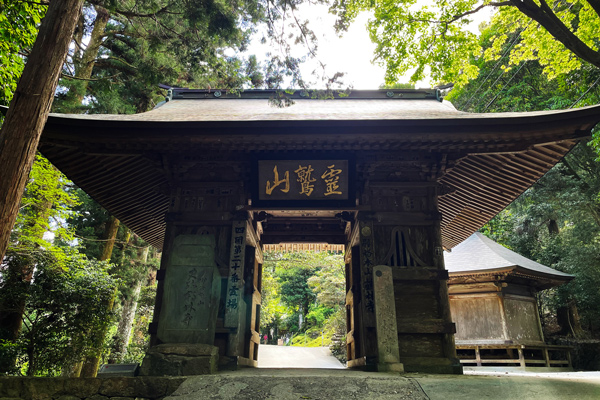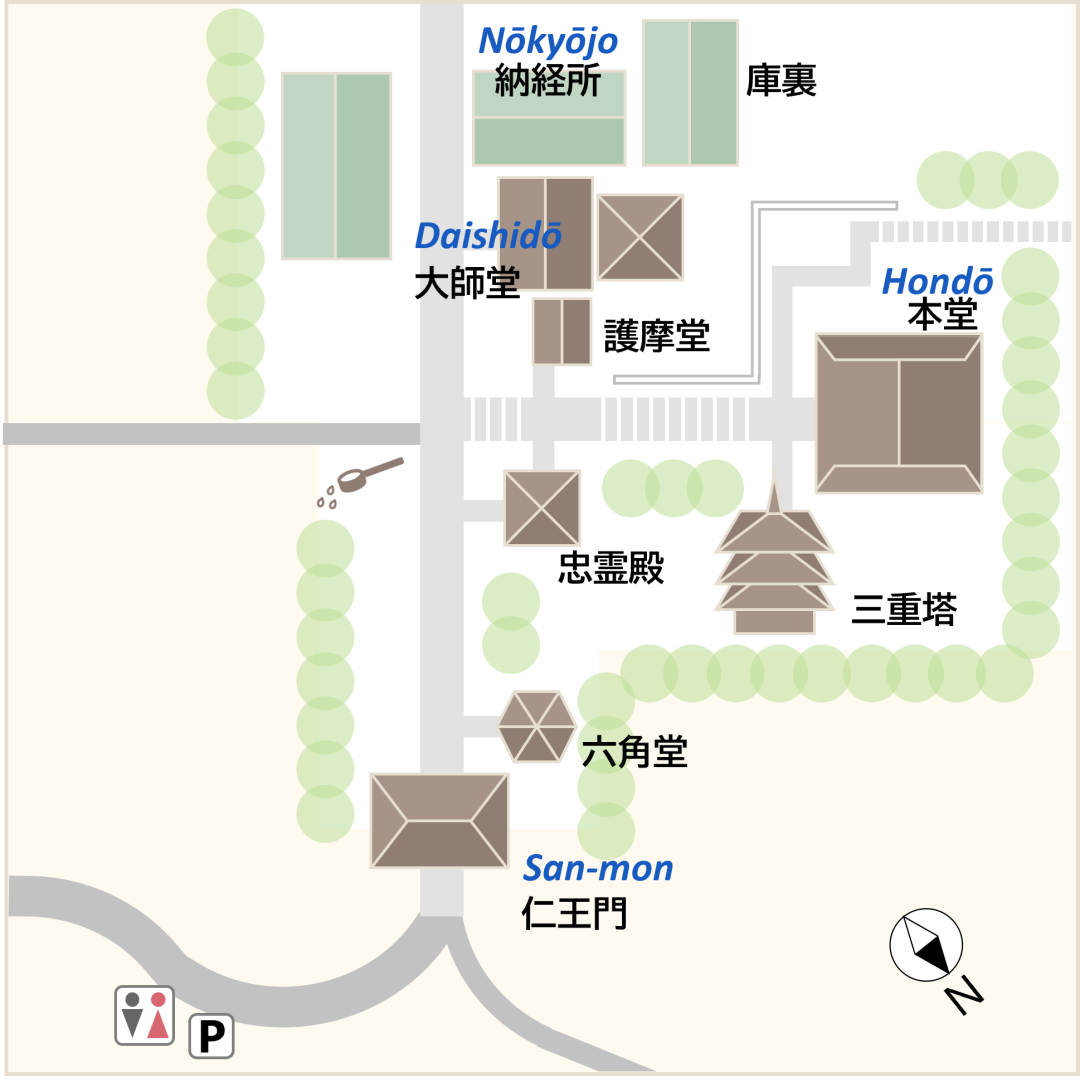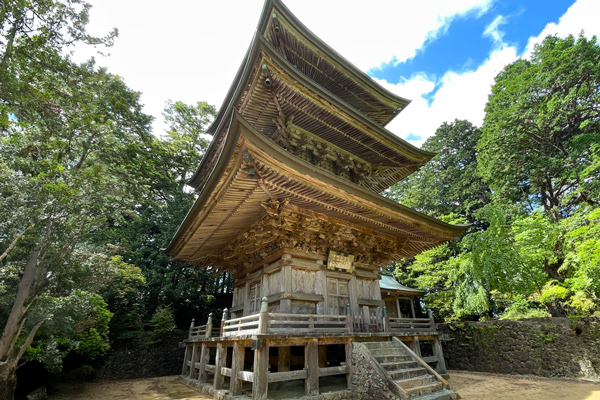The Shikoku Pilgrimage Temple Guide
Temple 20, Kakurinji

Precinct map

History of the temple
Kakurinji is located at the top of Mt. Washigao, at 470 meters elevation. From the temple grounds, you can see the mountain peaks of Kishu and Awaji, and the Pacific Ocean in the distance. Giant cedar, cypress, and pine trees, some over 1,000 years old, cover the approach to the temple. The tranquil temple gate evokes a rich atmosphere.
According to legend, Kobo Daishi founded the temple in 798 by order of Emperor Kanmu (reigned 781-806). When he was engaged in Buddhist training, two white cranes spread their wings and landed on an old cedar tree, seeming to protect a small golden Jizo Bosatsu (Earth Treasury Bodhisattva). Delighted by this scene, Kobo Daishi carved a 90-centimeter-tall statue of Jizo Bosatsu from a nearby sacred tree. The Jizo statue was placed inside the larger statue as the principal image of the temple, and the temple was named Kakurinji (Crane Forest Temple).
Because the shape of the mountain near the grounds resembles Vulture Peak, Buddha’s favorite retreat in India, the mountain name of the temple (temples are metaphorically called mountains) became Ryōjuzan (Vulture Peak). Since then the temple has been highly regarded by emperors such as Emperor Heijo, Emperor Saga, and Emperor Junna, as well as warlords such as Minamoto no Yoritomo, Yoshitsune, Miyoshi Nagaharu, and Hachisuka Iemasa.
The temple prospered greatly as a result of the construction of seven major buildings and donations of land. It survived the Tensho period (1567-1568), when temples throughout Awa (Tokushima) were burned by Chosokabe Motochika, perhaps because it was difficult to reach. Local people call the temple Otsuru or Otsuru-san (a friendly way speaking of a crane). It is a temple deep in nature, where wild birds dance in the air.
Highlights
Three-storied pagoda
The temple is located on a mountain 470 meters above sea level. On the east side of the temple, there is a three-storied pagoda reaching up to the sky, surrounded by large trees. Construction of the pagoda began in 1817, and the basic structure was completed in 1827. The distinctive feature of this pagoda is its railings. They are fixed by giboshi (ornaments resembling onions) on the first floor, hane (not ornaments, but the ends of the poles are angled upwards) on the second floor, and gyakurento (lotus-shaped ornaments) on the third floor. For its inauguration, a grand ceremony of mandala offering was held outside. The pagoda is still fully equipped with the ceremonial tools of the time, and the design drawings are still in existence. As the only three-storied pagoda in Tokushima Prefecture, it was designated a Prefectural Important Cultural Property in 1952.
Pilgrimage Trail
The pilgrimage trail climbs from the foot of the mountain for about four kilometers, one and a half hours’ walk, to the temple gate. There are 21 stone pillars that act as guideposts along the way. These stone markers are called choseki (milestones -- cho is a Japanese traditional unit to measure distance, about 109 meters). Starting from the Hondo, each stone is inscribed with a Japanese era name such as Joji (1362-1368), Oan (1368-1375), Eiwa (1375-1379), and Meitoku (1390-1394). As you walk along the stone path, imagine the culture of veneration of Kobo Daishi during the Muromachi period (1336-1573). The path was designated as a National Historic Site in 1998 as a result of 20 years of efforts by volunteers to preserve the path.
Choseki
Eleven stones inscribed with the era names of the Muromachi period remain along the pilgrimage route towards Hondo. One cho measures about 109 meters. Those are the oldest choseki in Tokushima.

Details
Names: Ryōjuzan, Hōjuin, Kakurinji
Denomination: Koyasan Shingon sect
Principal image: Jizo Bosatsu
Founded: Kobo Daishi
Founded: 798
Access
Address: 14, Ikuna-Washigao, Katsuura-cho, Katsuura District, Tokushima 771-4303
Phone: 0885-42-3020
Parking: Yes, payment required
Lodging: None
Official website: None
